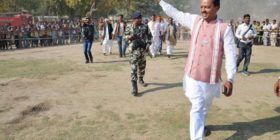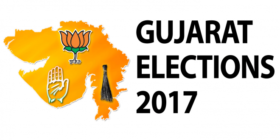Last week, Narendra Modi didn’t mince words to BJP MPs as he welcomed Amit Shah to Parliament for his first term in the Rajya Sabha.
Lashing out at truant lawmakers who have embarrassed the government on at least three occasions during the just concluded Monsoon Session, he warned, “Amit Shahji ke (Parliament mein) aane se aap ke mauj-masti ke din samaapt ho gaye hain.’’
In other words, with Shah’s entry into Parliament, party time is over for BJP MPs .
The sentence succinctly encapsulates what Shah has come to represent in the time of Modi. He is the disciplinarian extraordinaire to whom Modi has entrusted the task of transforming the BJP from a flabby, directionless, moribund party into a giant formidable election machine, sculpted and honed to conquer the peak that has eluded the RSS since it signaled its political ambitions with the creation of the Jan Sangh (the BJP’s earlier avatar) in 1951: To replace the Congress as the single dominant national force and extinguish Nehruvian secularism with the creation of a Hindu rashtra.
As he observes his third anniversary as BJP president, a stint crowned by the gift of a seat in the nerve centre of our democratic polity, Shah can look back with satisfaction. In three short years, he has stamped his imprint so strongly on the party that the legacy of its stalwart co-founders, Atal Bihari Vajpayee and Lal Krishna Advani, has faded into distant memory. There is no room for Vajpayee’s utopian Gandhian socialism or Advani’s fuzzy brand of Hindutva as cultural nationalism layered with swadeshiconomics in Shah’s lean and mean BJP.
His success is self-evident. After helping Modi to script his stunning 2014 Lok Sabha victory and surpass Vajpayee and Advani by netting the BJP its first ever majority government at the Centre, Shah has touched greater heights. In the past three years, he has enlarged the BJP’s national footprint, spreading it into areas hitherto out of bounds for a party that was known as a Bania-Brahmin party of the Hindi heartland. Today, the BJP rules in 18 states, including three in the North East. Some it has bagged fair and square through elections. Others have come through questionable backroom maneuvers. But every success reaffirms Shah’s motto: All’s fair in war and politics.
Even his most bitter critics will acknowledge that Shah has breathed new life into the BJP and energised it. This is no mean feat. It is rare for a political party to be active and on the go when it is in government. It is even rarer for a party president to be almost as powerful and high-profile as the prime minister. For instance, does anyone recall the names of Congress presidents when Indira Gandhi was prime minister or BJP presidents when Vajpayee was in power? Under both, the party stagnated, eventually losing its capacity to win elections in the face of organisational decay.
Shah, on the other hand, has not only kept the party relevant and active, he has become as much a household name as Modi, though he lacks the latter’s mass appeal. Shah’s success can be explained by the following statistics: In three years as party president, Shah has visited 325 of the country’s 680 districts, held 800 organisational meetings for election micro management in 16 states, addressed 575 rallies across the nation and sat in on 105 meetings with the prime minister, Union ministers and 44 meetings with BJP chief ministers on various issues. He has also chaired more than 75 government-party coordination meetings.
The figures also reveal another hallmark of Shah’s tenure: He has taken over the political management of governance, leaving Modi free to concentrate on policy making and administration. It’s a neat division of labour, facilitated by the empathy and understanding that has developed between them through long years of partnership in Gujarat. Manmohan Singh and Sonia Gandhi failed to achieve this equilibrium during UPA rule because they were not on the same page on many issues. The result was dissonance in governance as politics and policy often pulled the administration in different directions.
Shah undoubtedly hopes to go down in history as BJP’s most successful president. He has certainly scored higher on the election front compared to his predecessors. However, success has a price and the glitter of poll victories cannot hide the fundamental manner in which the BJP has changed under him.
This was a party that prided itself on collective decision making. Even as Vajpayee and Advani towered over everyone, the BJP always boasted of a pantheon of leaders of near equivalence. It also believed in mentoring a generation of future leaders, most of who are in the current dispensation, starting with Modi himself.
And its core strength lay in the nurturing of state leaders who have won successive Assembly elections for the party. Modi was a star in a galaxy that included Shivraj Singh Chouhan and Vasundhara Raje, among others.
Shah has refashioned the BJP into a one man special-purpose vehicle: To help Modi pursue power. He has centralised decision making by creating levers of powers and setting up structures that only he controls on behalf of the boss. When Modi warned his MPs that Shah would be watching them in Parliament, he was only reiterating what everyone in the party already knows: That Shah keeps a hawk eye on even the lowest worker through an intricate information chain.
It is ironic that the party which prided itself on being “different”’ is starting to look more and more like Indira Gandhi’s Congress as Shah sacrifices the old BJP at the altar of winning elections.
In which case, a Congress-mukt Bharat could simply mean replacing it with another of the same.






Leave a reply